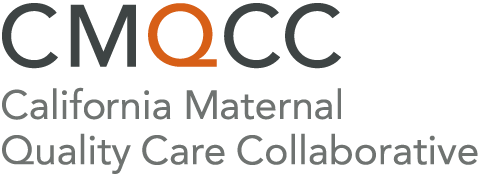Supporting Vaginal Birth
The California Maternal Quality Care Collaborative has long been committed to supporting vaginal birth and reducing first birth cesareans. Although cesarean births can be lifesaving and medically needed, the rapid rise and the extreme hospital variation suggests that “grey-zone” indications seem to be driving much of these trends. Importantly, recent data indicates that term newborn outcomes have not improved in the last 20 years. The rise in cesarean rates has resulted in significant health (e.g. placenta acreta and previa, uterine rupture, hemorrhage and adhesions), social and economic costs for American women.
NTSV Cesarean Birth Rate
CMQCC developed a standardized population for assessing cesarean births that focuses on the all-important first birth. This measure is known as the Nulliparous, Term, Singleton, Vertex (NTSV) Cesarean Birth Rate, which identifies the proportion of live babies born at or beyond 37.0 weeks gestation to women in their first pregnancy, that are singleton (no twins or beyond) and in the vertex presentation (no breech or transverse positions), via cesarean birth. The US Department of Health and Human Services in its Healthy People 2020 project simplified the name for non-obstetric audiences as “Low Risk Cesarean Birth among First Time Pregnant Women.” This is a bit imprecise as there are certainly some higher risk patients that remain in the denominator but have very little impact.
The Joint Commission subsequently adopted this metric in 2010 and now requires all hospitals with more then 300 births report their results as part of the Perinatal Core Measure Set. The metric has also been adopted by the Leapfrog Group and Centers for Medicare and Medicaid Services. Several states also require hospital reporting as part of their Medicaid quality initiatives. The NTSV Cesarean Birth measure was re-endorsed as one of NQF’s Perinatal and Reproductive Health measures in 2016, and The Joint Commission is now the steward of the measure.
NTSV Cesarean Birth Measure Specifications
This measure assesses the number of nulliparous women with a term, singleton baby in a vertex position delivered by cesarean birth. This measure is part of a set of nationally implemented measures by The Joint Commission that address perinatal care:
- PC-01: Elective Delivery
- PC-02: Cesarean Birth
- PC-05: Exclusive Human Milk Feeding
- PC-06: Unexpected Complications in Term Newborns
Denominator Statement
Nulliparous patients who delivered a live-term singleton newborn in vertex presentation.
Numerator Statement
Denominator cases delivered by cesarean.
For more information and full-measure specifications, please see The Joint Commission's website.
